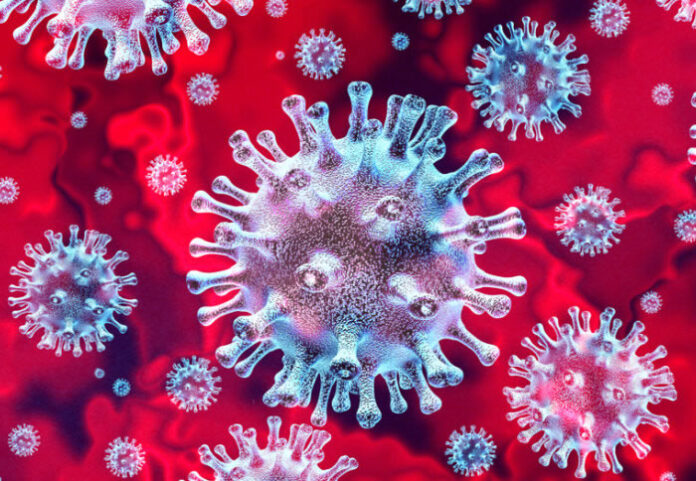Like in the Spanish flu of 1918, a second wave of the COVID-19 pandemic is coming.
Experts are warning that the second COVID-19 wave is inevitable even as things are returning to normal in Canada.
“Until we get the vaccine, I don’t think we can really avoid the second wave,” said Rama Nair, an expert in epidemiology with 40 years’ experience as a teacher and researcher at the University of Ottawa, in a CBC report.
Nair believes returning too quickly to pre-COVID-19 lives could undo the gains made in containing the novel coronavirus.
“It’s not just going to disappear,” Nair said in the report. “We haven’t reached anywhere near the herd immunity that we require to avoid a second wave.”
CBC reported that this absence of herd immunity, when a sufficiently high proportion of the population is immune to a contagious disease, thus controlling its spread, is something Dr. Doug Manuel, a senior scientist at The Ottawa Hospital, likens to kindling.
For example, according to Manuel, about 99 per cent of Ottawa’s population is likely still vulnerable to COVID-19. That means only about one per cent of the population has contracted the disease.
The curve of infections “hasn’t flattened because it’s gone through our community, it’s flattened because we’ve distanced. We’ve slowed it down,” Manuel said.
The key, Manuel said in the CBC report, is to keep that new spread under control.
“We have to be very careful. This is a tricky virus,” he warned. “I think what distinguishes COVID is this high ability to spread before you even have symptoms.”
The CBC recalledthat it was the second wave of the Spanish flu in the fall of 1918 that tore through hospitals and killed people within hours of the first symptoms appearing.
Esyllt Jones, a University of Manitoba historian who has studied the Spanish flu, said while the illness was especially deadly and virulent, its spread was abetted by the slow reaction of public health officials at the time.
“The lessons of the [Spanish] flu pandemic are mostly lessons of what didn’t work,” she said.
A lack of government assistance a century ago meant sick people had little choice but to go to work, according to CBC.
And while there were similar shutdowns — gatherings at schools, churches and pubs were often verboten — any notion of physical distancing only lasted a month or so, not nearly long enough to stamp out the virus.
It’s believed the infection rate of the second wave of the Spanish flu was between four and five times greater than the first wave, which had mostly infected returning First World War soldiers, Jones said.
In the end, CBC reported, the Spanish flu killed about 50,000 Canadians at a time when the country had a population of about eight million.
In a separate report, the Occupational and Health Safety magazine of Canada indicated that experts agree that numbers are poised to rise and could very well explode in surveillance blindspots.
A “tried and true” principle with any respiratory virus is that infection risk is lower outside and in larger spaces where germs can dissipate, said Dr. Camille Lemieux, medical lead for the COVID-19 assessment centre at Toronto’s Western Hospital.
That’s opposed to small, confined areas with poor ventilation, but the speed of this novel coronavirus to find human hosts is what’s most concerning, said Lemieux.
“The one thing about COVID that I think has a lot of people stymied is the rapidity with which it spreads when it gets a foothold,” said Lemieux, also chief of family medicine at the University Health Network in Toronto, in the Occupational and Health Safety magazine report.
Even with containment, the virus is circulating in the community thanks to a small percentage of people with mild and no symptoms who don’t even know they are sick, added Dr. Gerald Evans, medical director of infection control at the Kingston Health Sciences Centre.
Evans said that “second waves are inevitable” as regions open up.
“If people start congregating around campfires and other things in parks, and then large groups of golfers are getting together and hanging out, that could facilitate transmission,” said Evans, also chair of the division of infectious diseases at Queen’s University.
If Evans were to guess, he said in the magazine report that a Canadian resurgence is very likely to start among younger adults who resume social activities, suggesting they’re more likely to risk exposure and will have been largely shielded from infection.
“They have been in literal isolation now for months,” Evans noted.
“So, when we start to open restaurants, and we start to open social venues, I think what we saw in Korea is a distinct possibility of what might emerge here.”
It’s clear though, that political and medical leaders are wary of possible setbacks, the Occupation and Health Safety magazine reported.
Premier Doug Ford of Ontario urged businesses to only open if they were absolutely ready and asked residents to continue limiting their outings.
The Ontario Medical Association encouraged those who venture out to wear a mask.
Patrick Saunders-Hastings, an epidemiologist and consultant with the management consulting firm Gevity Consulting, said a phased approach should allow public health to recognize and respond to warning signs before an exponential increase occurs.
“We are better able to conduct that sort of ‘test, trace and isolate’ framework than we were earlier on in this outbreak,” Saunders-Hastings suggested in the report.
Saunders-Hastings added that ongoing physical distancing rules mean most offices will only be able to bring back 20 to 40 per cent of employees.
While industrial settings such as meat plants have already suffered COVID-19 outbreaks, Evans cautioned cautions against assuming where the next workplace outbreak could occur.
Existing prevalence of COVID-19 infections offer little guidance, too, said Evans.
Evan fears what might happen if big-city dwellers hit the road for a day trip, bringing the virus to a region highly susceptible precisely because counts are low, the expert said in the report.



